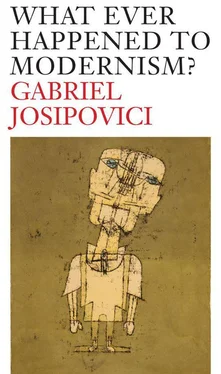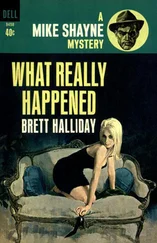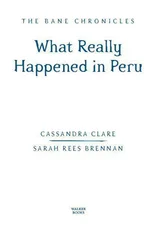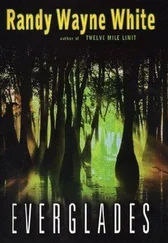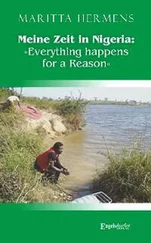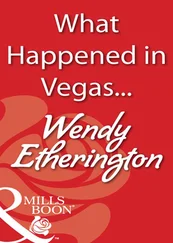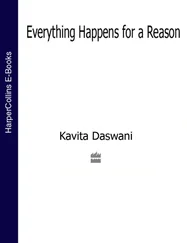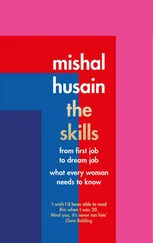is to take the polyphony present in the novels as a reflection of the multivoicedness found in the real world and thus ‘to transfer [one's] explanations directly from the plane of the novel to the plane of reality.’ The effect of doing this … is to characterize the novel as a single consciousness's vision of this fragmented world, something that is quite the contrary of Dostoevsky's procedure.
The other is ‘to understand the constant voicing of different positions as part of an ideological project and to try to identify which of these ideas is Dostoevsky's own’. The equivalent positions in relation to Picasso's collages are the ones that take them as representing the group of left-leaning friends talking round the coffee-table, and those that see them as projecting Picasso's own theory of newspapers as secret instruments for perpetuating the status quo. But both these are false conclusions, both deny the radical multivoicedness of Picasso's collage.
Though Bakhtin is helpful to Krauss at this juncture in her argument, I am not convinced that he quite makes the case he is trying to make for Dostoevsky. A reader of Krauss who had grown up with Eliot and Virginia Woolf, however, would have no difficulty in seeing what she was trying to do. Eliot himself, of course, tries to ‘re-monologise’ The Waste Land by suggesting, in his notes, that all that we are reading happens in the head of one of the characters mentioned in it, Tiresias; and there have been countless analyses of the poem which argue that what it ‘depicts’ is the fragmentation consequent upon the First World War. But Eliot's poem works precisely in the way Krauss suggests Picasso's collages do, and that the poet himself sensed this is suggested by the epigraph he originally intended to append to the poem, from Dickens: ‘He do the police in different voices.’ In the event he came upon something better, an epigraph that can and cannot be read (rather as the smaller fragments of type in Picasso's collages can and cannot be read: you need a magnifying glass), since it is in a mixture of Latin and Greek, and thus plays with the reader in the same way as do the other quotations and fragments of other languages embedded in the poem; for, deciphered, it touches on a central theme of the poem, death-in-life, but decipherment is also one of the key issues raised by the poem. The poem, like the 1912 Violin , flies off in different directions and slyly plays at the border between figure and ground, between our sense of incomprehension and our awareness that there is comprehension, but, to paraphrase Kafka, not for us.
To reconstitute the fragments is, in Kierkegaard's terms, to turn what is lived experience into thought experience, whereas both collage and poem explore what happens precisely when the one is turned into the other. The modern waste land, as Eliot describes it, is a place where thought and naked desire have taken the place of feeling and comprehension, which have almost completely atrophied. This situation, as we have already seen, is difficult to grasp precisely because to ‘grasp’ it is already to have lost it, to have become like the characters in all Eliot's early poems who can only think, not feel, who know too much but understand nothing.
A beautiful essay by John Mepham on Virginia Woolf's To the Lighthouse can help us in our own quest to understand. In Part III of the novel Lily Briscoe stands looking out to sea, painting and letting her mind wander over the past and especially over the presiding angel of the house, Mrs Ramsay, now dead, as she watches the boat carrying Mr Ramsay and his two children being rowed across the bay by the fisherman's boy. Suddenly (we are at the end of section 5) she finds there are hot tears in her eyes:
Was she crying then for Mrs Ramsay, without being aware of any unhappiness? … What was it then? What did it mean? Could things thrust their hands up and grip one; could the blade cut; the fist grasp? Was there no safety? No learning by heart of the ways of the world? … ‘Mrs Ramsay!’ she cried aloud. ‘Mrs Ramsay!’ The tears ran down her face.
6
[Macalister's boy took one of the fish and cut a square out of its side to bait his hook with. The mutilated body (it was alive still) was thrown back into the sea.]
7
‘Mrs Ramsay!’ Lily cried, ‘Mrs Ramsay!’ But nothing happened. The pain increased. That anguish could reduce one to such a pitch of imbecility, she thought! … Heaven be praised, no-one had heard her cry that ignominious cry, stop pain stop! … No-one had seen her step off her strip of board into the waters of annihilation. She remained a skimpy old maid, holding a paint-brush on the lawn.
And now slowly the pain of the want and the bitter anger (to be called back, just as she thought she would never feel sorrow for Mrs Ramsay again …) lessened; and of their anguish left, as antidote, a relief that was balm in itself, and also, but more mysteriously, a sense of someone out there, of Mrs Ramsay, relieved for a moment of the weight that the world had put on her, staying lightly by her side…
Why does Virginia Woolf introduce Macalister's boy at this point? Why interrupt our communion with Lily in her moment of anguish? For that interruption is no simple Brechtian alienation, it is a wrench, a tearing at the fabric of our being, quite as powerful in its way as Lily's sudden and unexpected experience of the death of Mrs Ramsay.
‘To find the conclusion it is necessary first of all to observe that it is lacking and then in turn to feel quite vividly the lack of it.’ In Part II of the novel Virginia Woolf had already begun to make us feel the lack when she killed off Mrs Ramsay in a bracketed aside. That's how it is, she seems to be saying, that's how loss occurs, unexpectedly, often very quickly, and how do we come to terms with the pain? There, as Mepham notes, she had used round brackets. Now she interrupts our communion with Lily's anguish with a whole new section, set in remorseless square brackets, and the effect is to make us experience, against our will, the fact that the world consists of more than our sorrows and joys; that many things go on simultaneously; that there is Lily Briscoe engaged with her painting; that there is the journey (at last) of the children to the lighthouse; that there is the daily life of the sea for Macalister's boy; that there is a dreadful death for the fish, mutilated and bleeding, and thrown without a thought back into the sea. This does not mean that Lily's loss is any the less real; but then neither is the excitement of the children nor the pain of the fish. All form part of the fabric of a larger life, fragments of a whole that must be accepted as beyond our imaginative grasp. And, as Kierkegaard understood, it is only with this almost unbearable realisation (realisation is hardly the word, this is something we experience viscerally or not at all) that some sort of healing can occur: the anguish lessens and leaves a sense of relief ‘that was balm in itself’; but also, ‘more mysteriously, a sense of someone out there, of Mrs Ramsay, relieved for a moment of the weight that the world had put on her, staying lightly by her side…’
There is no talk of redemption here, or even of understanding. Just as in The Waste Land the thunder gives a hint of rain to come but no more, though the poem , having exhausted itself, so to speak, ends in the quiet threefold repetition of that mysterious word, so soothing to pronounce: shantih, shantih, shantih . In both works, as in the majority of Modernist works, something happens as it unfolds, but it does not happen so much to the characters (though in a novel like To the Lighthouse there may be one especially privileged character, a sort of proxy of the author, such as Lily Briscoe) as to the reader (and to the author as reader of his or her own work). All we can say is that something has become unblocked, a change has taken place .
Читать дальше
